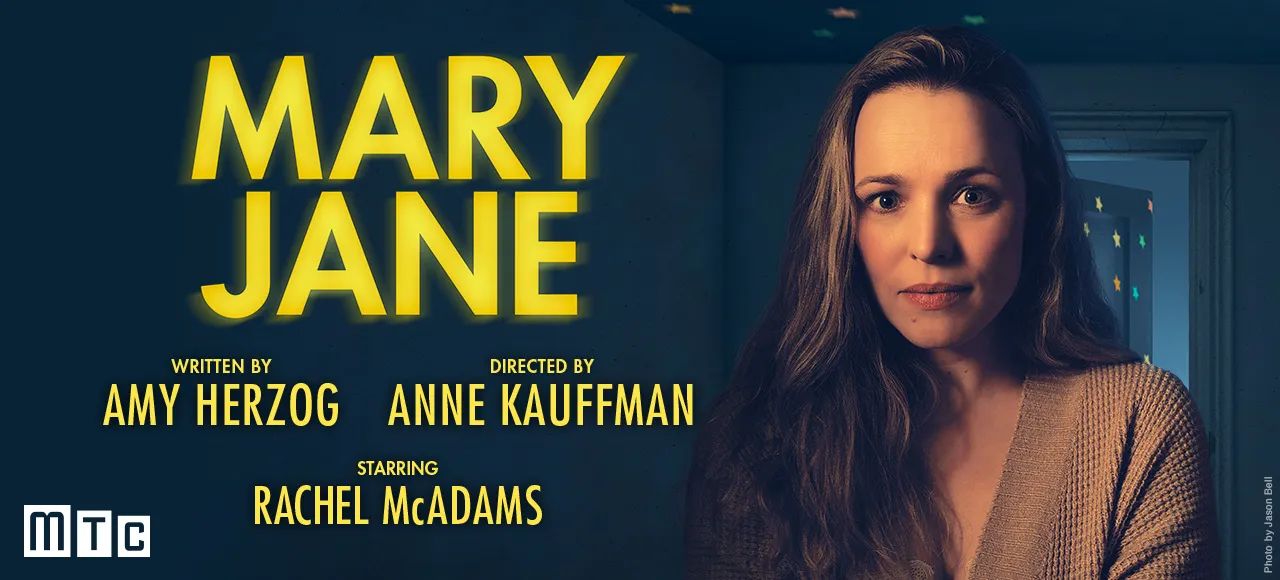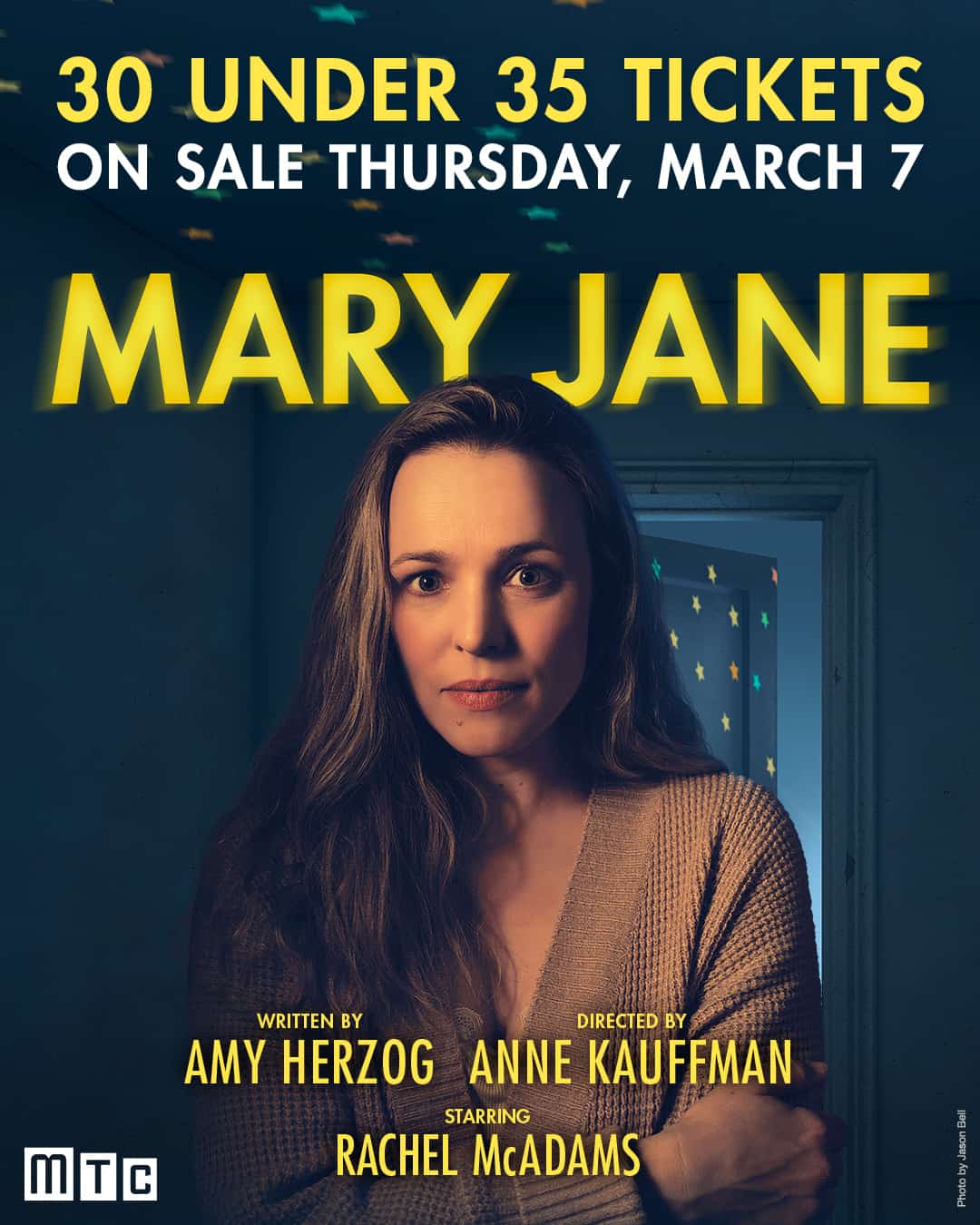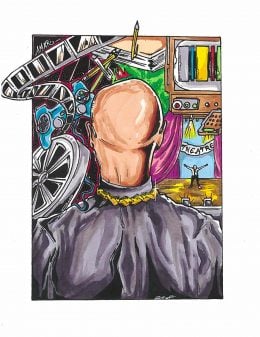Mary Jane (2024) Review: A Heartbreaking and Healing Drama
Rachel McAdams pulls us in and transcends us in “Mary Jane.”

Spoiler Alert: This summary and review contains spoilers.
Additionally, some images and text may include affiliate links, meaning we may earn a commission or receive products if you make a purchase.
“Mary Jane” Summary
Amy Herzog’s “Mary Jane” is a drama conveying people’s worst fears and how ignoring them is sometimes what’s necessary in order for people to get through them. Directed by Anne Kaufman and starring Rachel McAdams, this intimate play showcases the multitude of roles and lives we live and how this can all be upended in the blink of an eye. With an all-female cast, “Mary Jane” is a testament to grace and resilience.
Rachel McAdams makes her Broadway debut in “Mary Jane” as the title character. Mary is a woman in her 30s who once had dreams to become a teacher but is now a full-time caregiver to her 2-year-old child, who has multiple health issues and requires many people to keep him alive. It’s a miracle that the child made it to 2 years old. We never see the child, but his presence looms over every scene in the beeps of machinery that are meant to keep him alive. The situation is a prominent fear for any parent, yet Mary remains optimistic, warm, and chipper, sometimes to an admirable and delusional extent. She’s surrounded by women who care for each other, like her homecare nurse, Sherry, a mother named Brianne in a similar situation, and even her super, Ruthie. Their interactions are brief, sometimes repetitive, and feel surreal.
Yet Mary Jane’s whole world is uprooted once more when her child ends up in the hospital. The set morphs from Mary’s controlled space in her living room into a hospital. We’re inhabiting another world now, one of terror and confrontation with loss and existential dread. The actors once playing Mary’s support in the first act have become different characters within the hospital setting now. While Mary’s situation is more dire, “Mary Jane” focuses on the community and the hope one finds in unexpected places and people.
Content Information
“Mary Jane” includes some cursing, discussions of death and sickness, and is a content warning for any parent.
Other Noteworthy Information
- Herzog wrote “Mary Jane” while she had her own child with multiple illnesses.
- The play is offering free childcare for two matinee performances on May 12 and June 2.
“Mary Jane” General Information
| Director(s) | Anne Kaufman |
| Writer(s) | Amy Herzog |
| Language | English |
| Attendance Type | In Person |
| Event Status | On Schedule |
| Venue or Network | Samuel J. Friedman Theatre, 261 West 47th Street, NY, NY |
| Performance Date | April 3, 2024 |
| Opening Night Performance | April 2, 2024 |
| Last Performance At This Venue | June 2, 2024 |
| Venue URL | https://www.newyorktheatreguide.com/show/6955-mary-jane-tickets |
| Tickets Starting At | $90.00 |
| Genre(s) | Play |
| Duration | 1 Hour, 39 Minutes |
| Noted Performers | |
| Mary Jane | Rachel McAdams |
| Sherry/Dr. Toros | April Matthis |
| Amelia/Kat | Lily Santiago |
| Ruthie/Tenkie | Brenda Wehle |
| Brianne/Chaya | Susan Pourfar |
| Crew | |
| Scene/ Set Design | Lael Jellinek |
| Costume Design | Brenda Abbandandolo |
| Lighting Design | Ben Stanton |
| Sound Design | Leah Gelpe |
Character Descriptions
Please Note: This character guide is not an exhaustive list of every cast member, and character descriptions may contain what can be considered spoilers.
Mary Jane (Rachel McAdams)
Mary Jane is a resilient woman who doesn’t take pity on herself or others, but knows how to empathize and support her community. Mary is tired, always with a job, a task, and worry at hand, but she’s always capable of finding the good and hope in her situation and people.
- The actor is also known for their role in “The Notebook.”
“Mary Jane” Review
Our Rating: Positive (See Live) – Recommended

Notable Performances or Moments
Rachel McAdams as Mary Jane
Mary Jane’s character may sound like a stereotypical mom in a Lifetime movie, but the script’s nuance and credibility morph Mary into a complex human and a beacon of hope in the most trying of times. Rachel McAdams carries the dramatic weight of a person who has lived multiple lifetimes, always teetering on a dangerous loss, but constantly giving herself to others. McAdams finds the inherent warmth and kindness of her character that we all wish we had and could give to others.
Highlights
Dramatic Performances are Equally Relatable and Ethereal
“Mary Jane” requires most of its cast to play two characters and find the soul of each. People with kind words in the first half become spiritual guides in the second. We can see ourselves and the stress and mundanity of life in these performances, but the shift in “Mary Jane” serves as a reminder for anyone who has endured a long stay at the hospital. We meet strangers who become angels; their words and actions can last a lifetime. The writing and performances in “Mary Jane” capture two worlds that exist for anyone who has had to care for an ailing loved one.
Sound and Lighting Design Takes Us into Mary’s Mind
Since Mary’s child Alex is never seen on stage, we’re reminded of his presence in mechanic beeps and boops coming from unknown machines. The glows and dim light demonstrate Mary’s solitude without her ever having to say she’s lonely. All of this takes us deep into who Mary is as a person. The sound and lighting design in “Mary Jane” is a masterclass in visual art, demonstrating the most important rule: show, don’t tell.
A Heartbreaking and Healing Exploration of Loss
Mary Jane’s child will die before her. That fate is inevitable. For as much as she does to care for her child and keep him alive, the audience is confronted with a question that certainly Mary Jane has asked herself: What is this all for? The looming tragedy at the core of “Mary Jane” is as fragile as its offscreen child, but Herzog and Kaufman present a slice of life that rings true for anyone who has had to take care of or endure the loss of a loved one. What unfolds in “Mary Jane” is heartbreaking, but it also celebrates life and those who endure.
On The Fence
A Thin, Subtle Plot May Leave Viewers Wanting More
Unlike the showy monologues of Sorkin or the dizzying power dynamics in August Wilson’s plays, Herzog’s “Mary Jane” embraces the quiet connections and beauty we may find in our own lives. Characters’ faces break for the flicker of a moment; drama doesn’t rise but is always present; people aren’t vying for power but for connection. While some may find the lack of monologues or rising tension lacking, others may enjoy the quiet meditation that “Mary Jane” evokes.
Good If You Like
- Drama, Rachel McAdams, and stories about tragedy and strength.
Recommendations
If you like this, we recommend:
Check out our Live Performance page for our latest reviews and recommendations.


